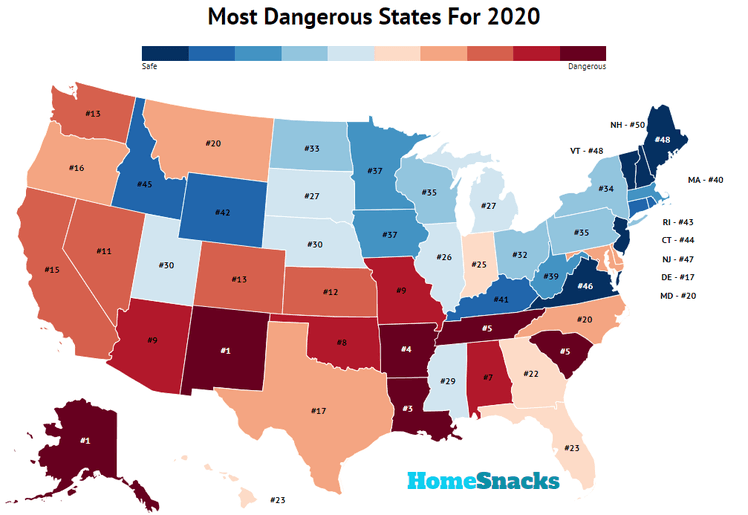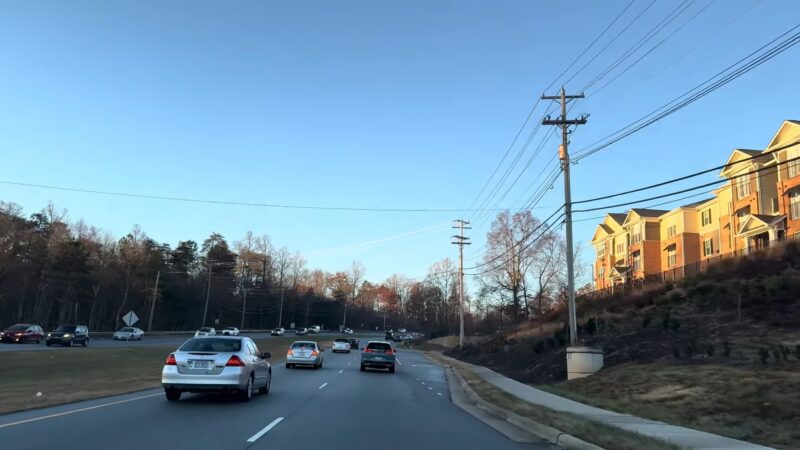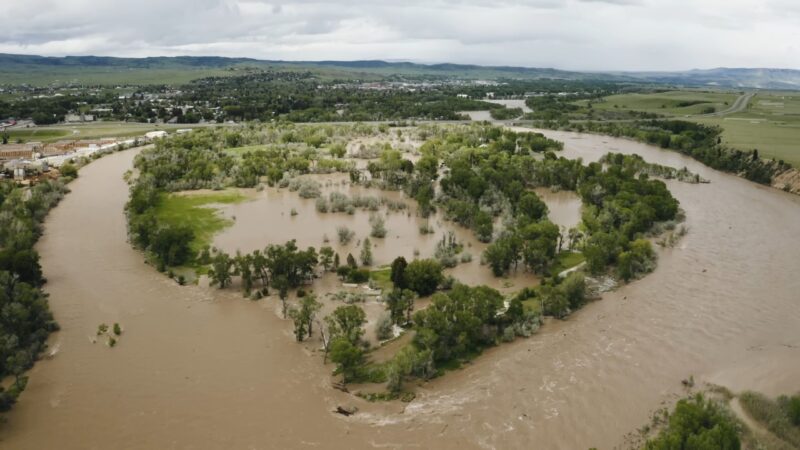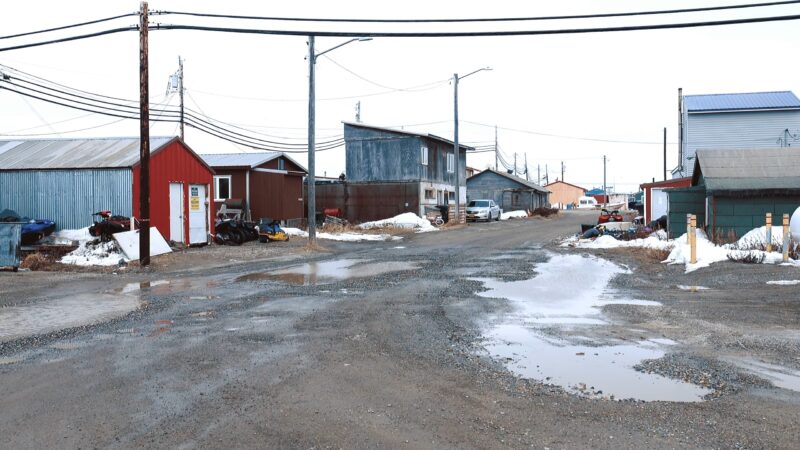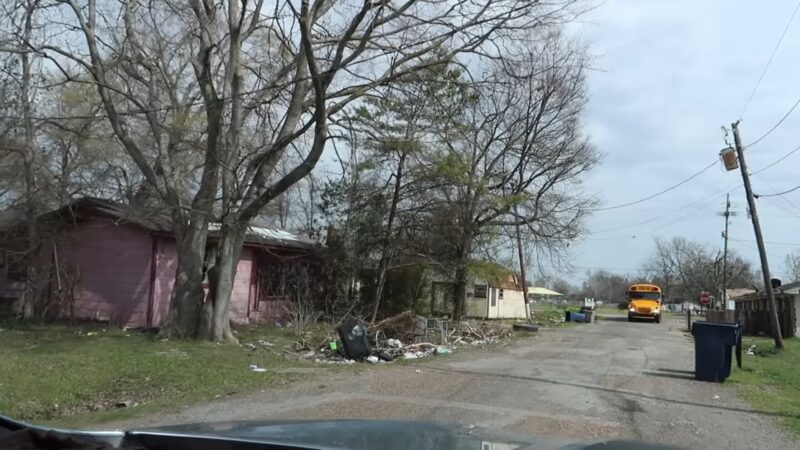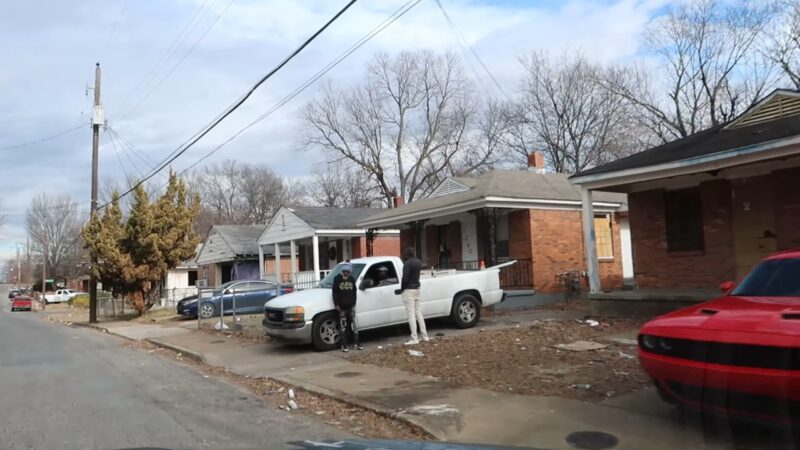Analyzing the levels of safety across different states is an essential aspect of understanding broader social trends and challenges within the United States. As we turn our attention to the most dangerous states in the US for the year 2024, it’s crucial to note that danger is a multi-faceted concept, encompassing various forms of crime such as violent and property crimes, as well as road safety and fatalities.
With ongoing social and economic changes, the landscape of crime and safety is ever-evolving, and state-specific factors play a pivotal role in these dynamics.
The discussion of safety and danger often intertwines with issues like drug use, socioeconomic factors, and the effectiveness of local law enforcement and safety measures. My analysis of crime rates draws upon a range of data sources to paint a detailed picture of which states exhibit higher risks and why.
Keeping informed on these matters is not only of interest for social scientists and policymakers, but it can also be a deciding factor for families and individuals planning to relocate or travel.
Key Takeaways
- Crime and safety in the US are impacted by diverse factors from socioeconomic conditions to road safety.
- Understanding the latest crime data is essential for assessing risks associated with different states.
- State-specific factors contribute significantly to variations in crime rates and overall safety.
Understanding Crime Rates And Methodology
In assessing the most dangerous states in the United States, it is essential to understand how crime rates are measured and what methodologies are employed. The crime rate is typically expressed as incidents per 100,000 residents on an annual basis. This per capita measurement allows for a standardized comparison across varying population sizes.
I consider a range of violent and property crimes to calculate overall crime rates. The data is sourced primarily from the FBI’s Uniform Crime Reporting Program, which compiles nationwide crime statistics. My methodology is rooted in compiling credible data sources, specifically, those reports that reflect the latest available figures, such as the Analysis of FBI Crime Statistics by the Brennan Center for Justice.
The methodology involves:
- Ensuring the latest year-over-year data is considered for the most current trends.
- Comparing state-by-state figures to understand regional variations.
- Recognizing that urban and rural areas may contribute differently to the state’s overall crime statistics.
By focusing on a clear and accurate collection of data, we can objectively analyze which states in America hold higher risks in terms of criminal activity. Through this meticulous approach, which excludes any kind of sensationalism or bias, I intend to deliver a factual representation of crime across the country.
Top Most Dangerous States in 2024
When assessing the safety of locations within the United States, various factors such as crime rates, natural disaster risks, and road safety are considered. In 2024, the rankings for the most dangerous states reflect a range of these concerns.
Montana, South Carolina, and New Mexico are reported to be the top three most dangerous states for drivers due to factors such as fatal car accidents and impaired driving incidents. This information highlights the importance of road safety and the risks drivers may face in these states.
Crime rates also play a significant role in determining the safety of a state. Reports suggest that states like Louisiana and Mississippi remain among the most dangerous states when considering violent crime and property crime rates.
Natural disasters also impact the safety of a state. For example, states prone to hurricanes, floods, or wildfires may have increased risks that contribute to their danger levels.
Here’s a quick list of states that frequently surface in discussions about safety:
- Montana
- South Carolina
- New Mexico
- Louisiana
- Mississippi
These rankings remind me to stay vigilant and informed about the safety and well-being of communities. It’s important to consider these factors when traveling to or residing in these states.
State-Specific Analysis of Crime
In examining crime rates across different states, I focus on the nuances that each state’s crime statistics reveal. From violent offenses to property crimes, each state displays a unique profile affecting its residents’ safety and security.
Alaska
In Alaska, the crime scenario often attracts attention due to the state’s remote location and challenging law enforcement logistics. The crime rate in Alaska is significant, particularly when it comes to violent crimes, which occur at a higher rate than in many other states. Reasons often cited include isolation, substance abuse, and a sparse law enforcement presence in many areas.
Arkansas
Arkansas has seen varying levels of crime, with particular concerns around aggravated assaults, which make up a substantial portion of the violent crimes in the state. My research indicates that economic factors and access to resources play a role in Arkansas’s crime rate.
Louisiana
Louisiana often appears at the top of crime-related lists, particularly concerning violent crime rates. The state struggles with a range of issues, including poverty and a high incarceration rate, which contribute to its crime challenges. The statistics underscore the need for multifaceted crime prevention strategies.
Missouri
The state of Missouri contends with high rates of violent crimes, specifically in urban areas such as St. Louis and Kansas City. These cities skew the state’s overall crime statistics, underlining the need for targeted urban crime reduction policies.
New Mexico
New Mexico has a notable crime rate, driven by factors such as drug-related offenses and property crimes. The state’s efforts to address these issues include a focus on strengthening community policing and enhancing legal repercussions for repeat offenders.
My research into these specific states provides a snapshot of the complexities inherent in addressing crime on a state-by-state basis. Each state’s unique challenges call for tailored approaches to law enforcement and crime prevention.
Violent Crimes Across America
In my examination of the current landscape of violence in the United States, I have noticed distinct patterns and variations in violent crime rates. These crimes, particularly focused on murder, robbery, and assault, present a complex picture that varies from state to state.
Murders and Homicide Rates
When assessing the data on murders and homicide rates, I find that certain states have higher incidences than others. The FBI’s recent crime reports indicate that New Mexico registers a notably high rate of violent crimes per capita. I notice a correlation in states with elevated murder rates and overall violent crime rankings. For example, data from Yahoo Finance suggests that there is a list of 25 Most Dangerous States in relation to these figures.
Robbery and Assaults
Transitioning to robbery and assaults, the impact of these offenses is substantial on the communities affected. Attacks range from physical to aggravated assaults, and the prevalence within certain metropolitan areas is concerning. A more nuanced perspective can be gleaned from examining specific cities rather than state-wide data, as urban centers often experience different rates of these crimes. For instance, U.S. News provides insights into 25 Most Dangerous Places based on crime rates which include these offenses.
Violent Crime Comparison by State
When I compare violent crime rates by state, there are clear leaders and outliers. The District of Columbia, although not a state, often appears with a high crime rate due to its urban density and reporting practices. The data I’ve looked at from Wisevoter showing the Crime Rate by State confirms this.In contrast, other states may report lower rates of violent crimes, but it’s crucial to consider the context behind these numbers, such as population density, policing policies, and socioeconomic factors that contribute to these variations.
Property Crimes in the US
In tracking crime across the United States, a significant focus must be on property crimes, with particular emphasis on burglary and car theft which represent notable challenges for law enforcement and community safety.
Burglary and Car Theft
Burglary, often involving the unlawful entry into a structure to commit theft or felony, remains a persistent concern. Meanwhile, car theft – the act of stealing or attempting to steal a motor vehicle – has widely variable rates across different regions. Law enforcement agencies stress the importance of protective measures such as home security systems and vigilant vehicle safety practices to mitigate these offenses.
State Property Crime Rates
When examining property crime rates by state, it’s vital to look at statistics that reflect not just the frequency of crimes but also regional population densities and law enforcement capabilities. Property crimes in urban centers often register higher in number due to denser populations, while suburban and rural areas might report a lower incidence of such crimes. The context of these numbers is crucial for a comprehensive understanding of the safety landscape across the states.
- Burglary: Specific states show a higher occurrence of residential and commercial burglary.
- Car Theft: The rates of car theft can vary significantly, with some states seeing an uptick in these crimes.
Law enforcement and crime analysts consistently work towards reducing the rates of property-based offenses, employing strategies that range from community-based interventions to advanced surveillance technologies.
Socioeconomic Factors and Crime
In my examination of crime across the nation, I’ve found that socioeconomic factors such as poverty, unemployment, and education play pivotal roles in shaping crime rates.
Poverty and Unemployment
I’ve observed that regions with higher rates of poverty often correlate with elevated crime rates. People in these areas may face greater economic hardship, creating a pressure cooker that can sometimes lead to criminal behavior.
The correlation is highlighted in the research which shows that in states like Louisiana, economic difficulties are intertwined with crime statistics. Unemployment specifically adds another layer of complexity, as it not only means a lack of income but can also lead to social ills such as increased stress and decreased community cohesion.
Education Influence on Crime Rates
Analyses have consistently shown that there is a connection between lower education levels and higher crime rates. I interpret this as an indicator that education can act as a form of socialization, equipping individuals with better life skills and opportunities, thus steering them away from criminal activity.
It’s compelling to note that improving educational attainment in a state can have a profound effect on its crime rates. This is made evident when considering the educational approaches and spending in various states compared to their crime statistics. For instance, a state like New Mexico, having significant crime rates, may reflect an underlying need for educational development.
Analysis of Road Safety and Fatalities
When examining road safety and fatalities, it’s vital to look at the latest data. In my review, I came across a report by Forbes indicating rankings of the most dangerous states for drivers. This report was grounded in metrics from the National Highway Traffic Safety Administration (NHTSA), which evaluates factors like the number of fatal car accidents.
Key Statistics:
- Increase in traffic fatalities: 6.8% from 2019 to 2020.
- Higher fatality rates in select states: Mississippi, Wyoming, Arkansas.
The National Roadway Safety Strategy provides a grim view of increasing motor vehicle deaths; a trend that reversed after 30 years of steady decline. Roadway fatalities decreased consistently for three decades, but recent years show a marked change in this pattern.
Factors like population density and traffic conditions contribute to state rankings. As per the World Population Review, densely populated states such as Florida and Texas have higher absolute numbers of car accident deaths, yet smaller states may also have disproportionately dangerous highways.
In assessing the most dangerous states, it’s essential to balance these factors. By understanding the complexity of variables at play, my approach to analyzing road safety demands a nuanced look rather than solely numerical comparisons. Through a confident and neutral lens, I find that such details not only inform but also empower safer driving initiatives.
Cities with High Crime Rates
When examining crime rates across America, certain cities consistently appear at the top of the list for their high rates of violent and property crimes. This is a close look at some of those cities, built upon a range of studies and reports from the current year.
Memphis and Baltimore are often cited for their higher-than-average rates of violent crime, including homicide, aggravated assault, and robbery. For instance, Memphis has seen a specific uptick in aggravated assault incidents. Violent crime rates in Memphis reflect this persisting challenge.
Moving over to Louisiana, New Orleans is known for its vibrant culture but has also reported significant crime numbers. Though New Orleans is a small city compared to others on the list, its crime rates relative to its population are noteworthy.
Anchorage, Alaska, a less expected entry, faces its own set of challenges, with higher levels of property crime being a particular concern. Crime trends show identifiable spikes in theft and burglary rates here.
Little Rock, Arkansas, and Albuquerque, New Mexico, also make the list, suffering from elevated levels of property and violent crimes. Albuquerque, for example, has a notable issue with auto thefts, while Little Rock grapples with aggravated assaults.
Lastly, Alexandria, Louisiana, while smaller in population, cannot go unnoticed. Its crime statistics on assaults and property crime capture attention on national crime reports. It’s important to remember these data points reflect current trends and could shift with effective law enforcement and community efforts.
| City | Notable Crime Concern |
|---|---|
| Memphis | Aggravated Assault |
| New Orleans | Violent Crimes per Capita |
| Anchorage | Property Crime |
| Little Rock | Violent & Property Crimes |
| Albuquerque | Auto Thefts |
| Alexandria | Assaults and Property Crime |
Please note, I’ve drawn upon the most current available data and reports for these insights into America’s cities with high crime rates.
Impact of Drug Use on State Danger Levels
When I examine the relationship between drug use and state danger levels, it’s evident that states with higher instances of drug misuse often exhibit increased rates of crime and health emergencies. For example, Vermont ranks highest in the percentage of teenage drug users, which correlates with a higher perceived danger in the state. States like New Mexico and Rhode Island also show significant drug use, suggesting a potential link to their overall safety concerns.
| State | Impact of Drug Use |
|---|---|
| Vermont | High |
| New Mexico | High |
| Rhode Island | High |
I find that higher drug use statistics can lead to an array of challenges, including increased rates of overdoses and drug-related arrests. The data also reveals that states with more prevalent drug issues could benefit from targeted education and rehabilitation efforts. For instance, the opioid epidemic, which has claimed many lives, is particularly pervasive in states with significant drug problems.
An analysis by WalletHub indicates states are ranked by various metrics of drug use, and those with worse rankings are considered to have harsher conditions contributing to the danger levels. Conversely, states with lower ranks in drug use metrics, such as Tennessee, tend to experience fewer drug-related issues, which might be reflected in lower danger levels within the state.
To paint a clearer picture, here are a few states listed by WalletHub with their respective rankings in drug use:
- Vermont (1st)
- New Mexico (2nd)
- Rhode Island (3rd)
- Tennessee (47th)
In short, there is a tangible impact of drug use on state danger levels, and monitoring these stats can help in understanding and potentially mitigating associated risks.
Analysis of Safety Measures and Family Protection
When I examine the landscape of safety measures across various states, I focus on strategies that support family protection. It’s imperative to understand that the safety of families is an intricate part of a state’s security framework.
Firstly, I consider the availability of law enforcement and emergency services, which are crucial for immediate response to incidents. In my assessment of community policing initiatives, I find that states implementing these programs typically foster stronger trust between citizens and the police, which indirectly benefits family safety.
I also explore the role of legislation in protecting families. States that enact well-structured laws aimed at limiting access to guns for potentially dangerous individuals are taking significant steps to create safer environments for families. Proactive approaches towards gun violence, as evidenced by statistics in regions like Missouri, can influence a family’s sense of security.
Another layer of protection is education on personal safety measures. My observation is that states providing comprehensive safety education for families, including how to prepare for emergencies and awareness of local crime trends, tend to enhance their citizens’ overall well-being.
Here’s a brief breakdown of the aspects I’ve investigated:
- Law Enforcement: Community-based police initiatives improve family-centered security.
- Legislation: States with stringent gun laws tend to report lower incidents affecting family safety.
- Education: Informative resources and programs equip families with the knowledge to protect themselves.
Incorporating technology for safety purposes is another area of interest. Homes equipped with modern security systems, such as surveillance cameras and motion detectors, contribute to the deterrence of potential criminal activity.
Overall, the intertwining of these protective measures forms a robust barrier against the threats that families face in their daily lives.
Reflections on Peace and Crime Trends
As a researcher, I continually analyze various indices and crime statistics to interpret the safety landscape across the United States. My recent examination of crime trends reveals a complex image that is often influenced by both local and national factors. The Global Peace Index (GPI), while typically focusing on nations, suggests methodologies that can be applicable to states when assessing overall peacefulness.
I have noticed fluctuations in violent crime rates in certain regions; a detailed breakdown can be accessed through crime trend reports like the Council on Criminal Justice’s Mid-Year 2024 update. These fluctuations are noteworthy, especially considering the implications they carry for the states’ inhabitants and policymakers.
| Types of Crime | Notable Facts |
|---|---|
| Violent Crimes | Increased in some areas |
| Property Crimes | Varied trends across states |
| Drug Offenses | Remained a persistent issue |
My findings have shown that some areas have experienced a rise in incidents that can be classified as attacks, which demand strategic response and prevention measures. In this context, it’s essential to draw on credible data and take a neutral stance to avoid sensationalism.
Crime trends offer a snapshot informed by multiple factors, from socioeconomic conditions to law enforcement strategies. Data analysis helps identify trouble spots as well as peaceful enclaves, assisting in targeted efforts to enhance public safety while respecting civil liberties. I emphasize the need for precise, current information, steering clear of dramatic language to convey a sincere and factual profile of America’s crime climate.
FAQs
In this section, I’ll address some of the most pressing questions related to crime rates in U.S. states as of 2024, including which states have the highest crime rates and the various factors influencing these statistics.
What are the top five states with the highest crime rates in 2024?
The states with the highest crime rates in 2024 include Louisiana, Missouri, Nevada, Maryland, and Alaska. These states have seen significant challenges with both violent and property crimes.
Which state has experienced the greatest increase in violent crime rates in 2024?
While specific statistics vary, Louisiana has been noted as a state with one of the highest rates of violent crime, continuing a trend of high crime rates in recent years.
How do safety rankings for U.S. states in 2024 compare to previous years?
Safety rankings for U.S. states in 2024 show that some states have made improvements, while others continue to struggle. The overall trend seems to be that while there are fluctuations, many of the states with high crime rates remain consistently at the top of these unfavorable rankings year over year.
What factors contribute to a state being classified as ‘dangerous’ in 2024?
A state is often classified as ‘dangerous’ due to a high incidence of violent crimes, such as homicides, aggravated assaults, and robberies. Economic factors, law enforcement agency strength, and social issues also play significant roles in contributing to overall safety.
Can you list the cities that have driven their state’s crime statistics up in 2024?
Cities like St. Louis in Missouri, Baltimore in Maryland, and Detroit in Michigan are known to have high crime rates, which can significantly influence their state’s overall crime statistics.
What measures are states with high crime rates taking to improve safety in 2024?
States with high crime rates are implementing various initiatives to improve safety, which include increasing law enforcement budgets, expanding community policing efforts, and investing in crime prevention programs that focus on education and rehabilitation.
Related Posts:
- How Long Can Oat Milk Sit Out? Shelf Stability and…
- What Are the Most Popular Sports in The World in 2024?
- Nvidia Surpasses Apple to Become World's Second Most…
- 5 Most Common Lizards Found in Florida - All You…
- Which Foods Increase Testosterone the Most: Top…
- Reasons Why This Might Be the Most Exciting EPL Season Yet
